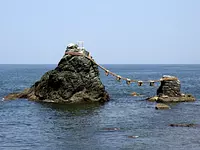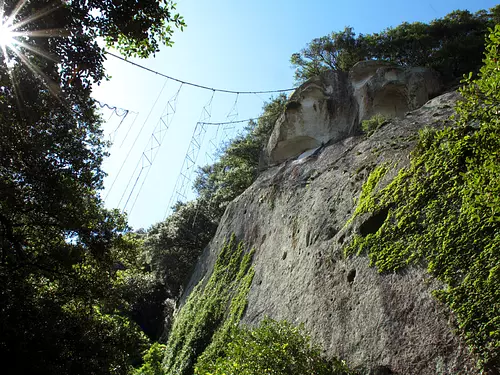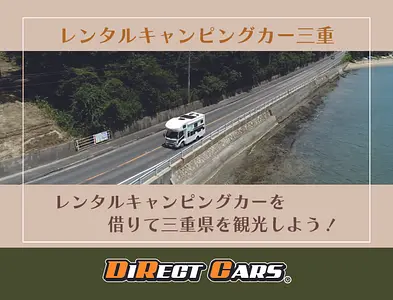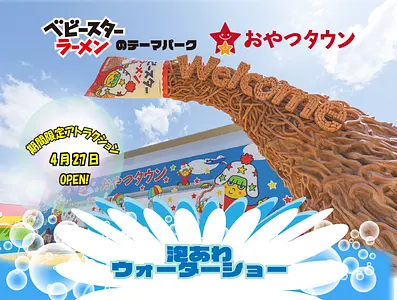I got a goshuin stamp at Hananoiwaya-jinjaShrine! Introducing the charm of spiritual shrines and Otsuna Chaya at Japan's oldest power spot!?
掲載日:2018.09.26
I received a goshuin stamp at KumanoCity Hananoiwaya-jinjaShrine Shrine, Japan's oldest shrine, located in Kumano City, Mie Prefecture! Among the sacred places of resurrection in Kumano, this Hana-no-Iwaya is particularly believed to be a place that touches the land of hell, and is also famous as a power spot. In addition to information on amulets and parking, we will also introduce information on "Otsuna Chaya" located at the adjacent Michi-no-eki ♪
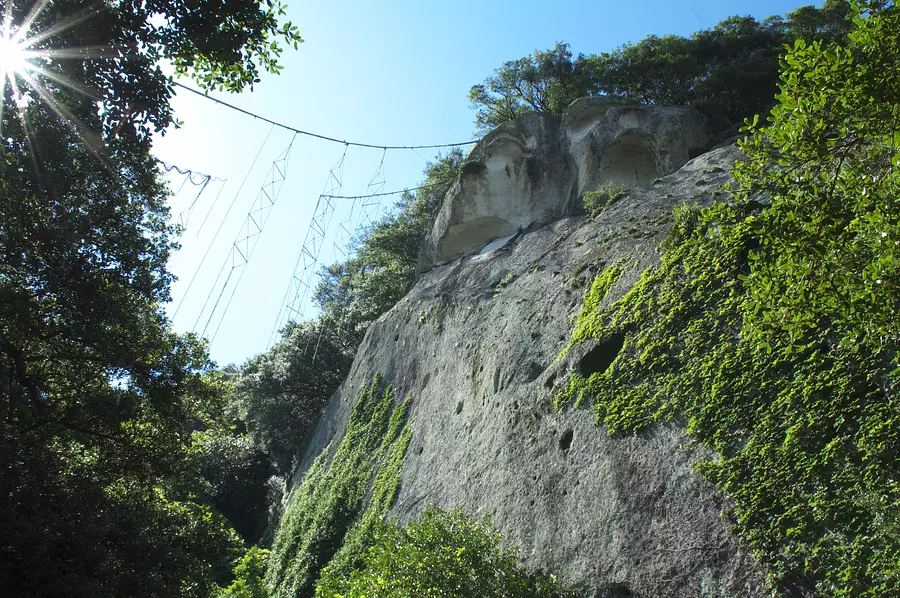
We thoroughly covered Hanano Iwaya Shrine, Japan's oldest shrine, which is said to be the place where Hana-no-Iwaya no Mikoto, the man who gave birth to the nation and gods, was buried, and which is said to be in contact with the land of the underworld.
Among the sacred places of resurrection in Kumano Hananoiwaya-jinjaShrine in particular is strongly believed to be ``a place that touches the land of hell,'' and is also famous as a power spot.
We will also introduce information about the adjacent Michi-no-eki ``Kumano Hana-no-Iwaya'' and goshuin stamps♪
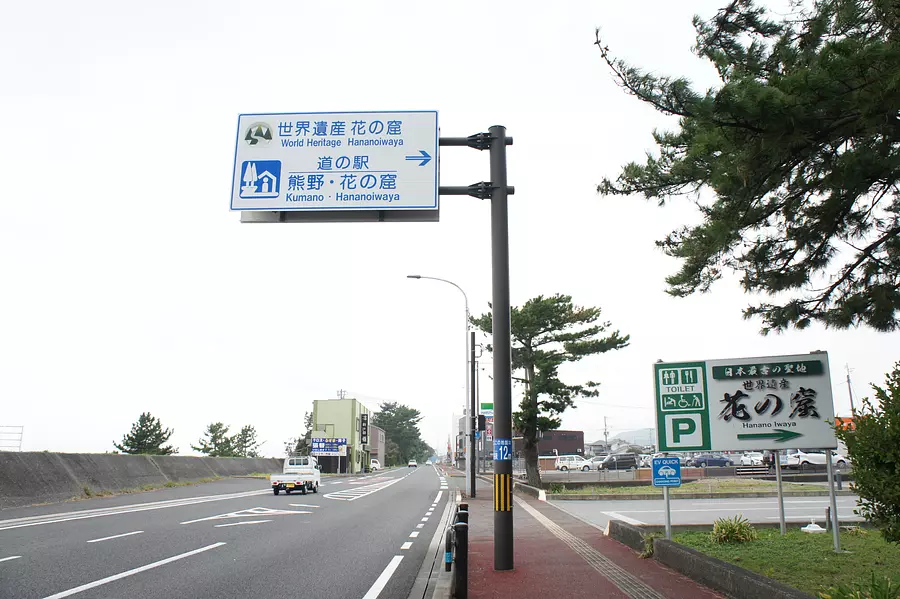
If you enter KumanoCity from OwaseCity direction and proceed south along National Route 42 past Onigajo and Shishiiwa, you will find the World Heritage Site `` Hana-no-Iwaya''. There is a large signboard on the right hand side in the direction of travel, so the entrance is easy to find.
About 20 minutes walk from KumanoCity Station. You will arrive in no time while walking while looking at the beautiful Shichirimihama Beach right in front of you.
Visitors to Hananoiwaya-jinjaShrine can park their cars at the adjacent Michi-no-eki Kumano Hana-no-Iwaya. There is a parking lot for 30 cars, but it can get quite crowded during the tourist season, and there are sometimes security guards on duty.
There is also an EV charging facility at the back of the parking lot.
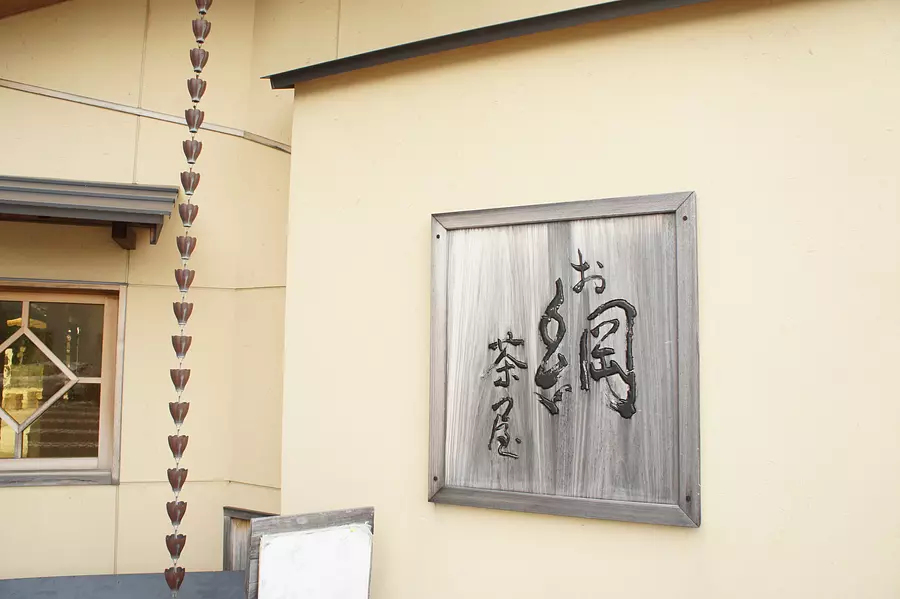
After parking your car in the parking lot of Michi-no-eki Kumano Hana-no-Iwaya, you will go through the passage inside Michi-no-eki 's Otsuna Chaya and go to Hananoiwaya-jinjaShrine in the back. Masu.
There is a sign saying `` Hananoiwaya-jinjaShrine Chikamichi'', so you won't get lost.
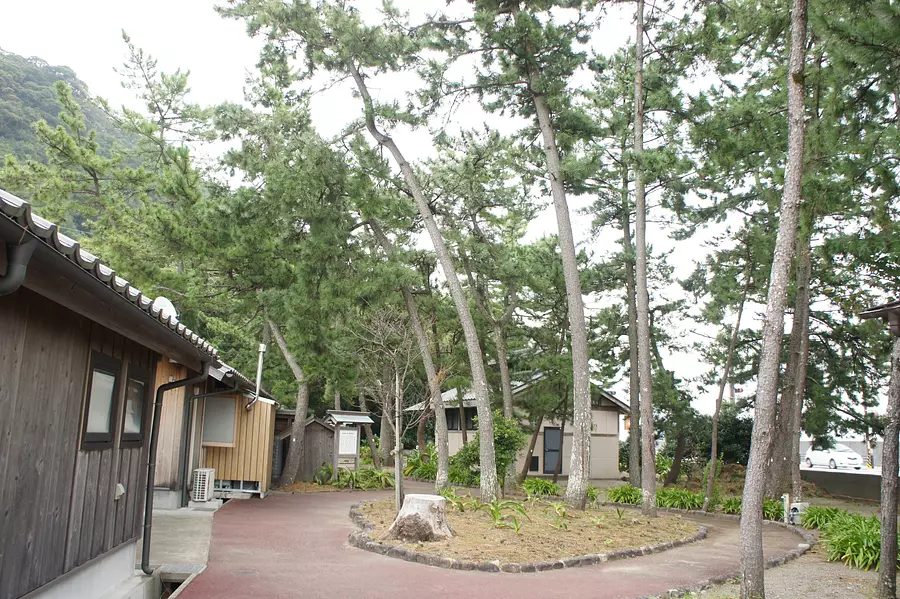
In addition, there is a passageway leading to Hana-no-Iwaya not only inside Otsuna Chaya but also behind it.
This time, I decided to go to a quiet passage in the back and return inside Otsuna Chaya.
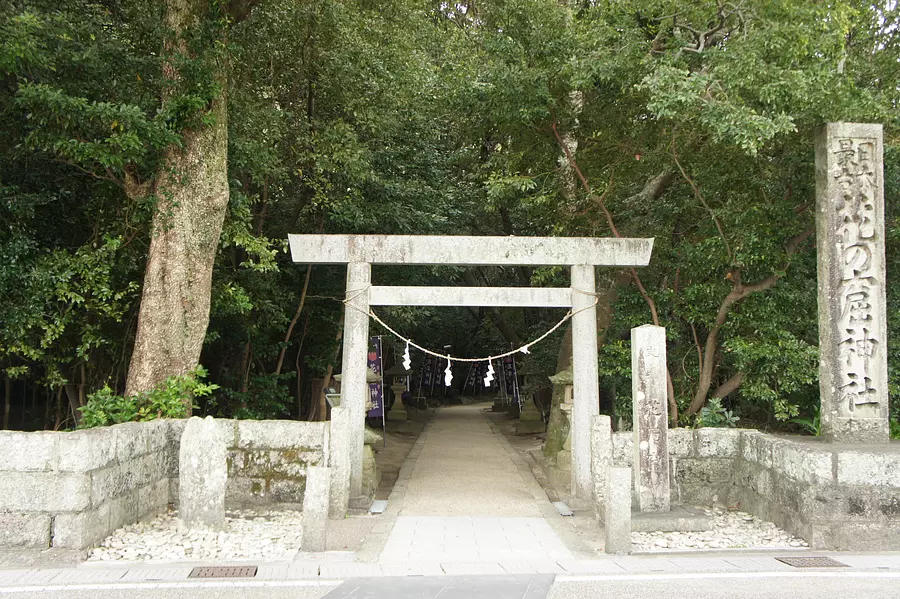
This is the entrance to Hananoiwaya-jinjaShrine.
Hana-no-Iwaya is also mentioned in the history book ``Nihon Shoki'' compiled during the Nara period, and is said to be ``Japan's oldest shrine.''
There are trees and the approach path is curved, so you can't see the back from here. At this point, there is a very mysterious atmosphere.
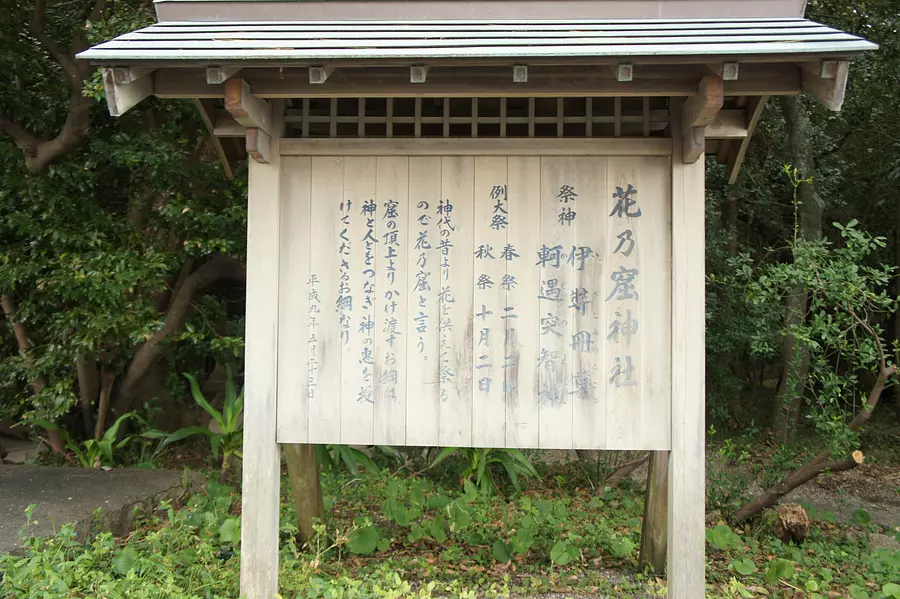
Hananoiwaya-jinjaShrine are Izanami no Mikoto and his son Kagutsuchi no Mikoto, who are said to have been born in Japan or the gods.
When Izanami gave birth to Kagutsuchi, the god of fire, she was burned and died. The tomb where Izanami was buried is said to be the `` Hana-no-Iwaya.''
There is also a legend that after Izanami's death, Izanami's husband, Izanagi no Mikoto, went to the land of the underworld in his desire to meet his wife. Due to this background, it is believed that this place is ``a place that touches the land of hell.''
It would not be an exaggeration to say that it is truly a sacred place of "resurrection."
By the way, many children were born to Izanami and Izanagi, but the most famous one was Amaterasu Omikami.
The god enshrined at Hananoiwaya-jinjaShrine was the mother of the god enshrined at IseJingu!
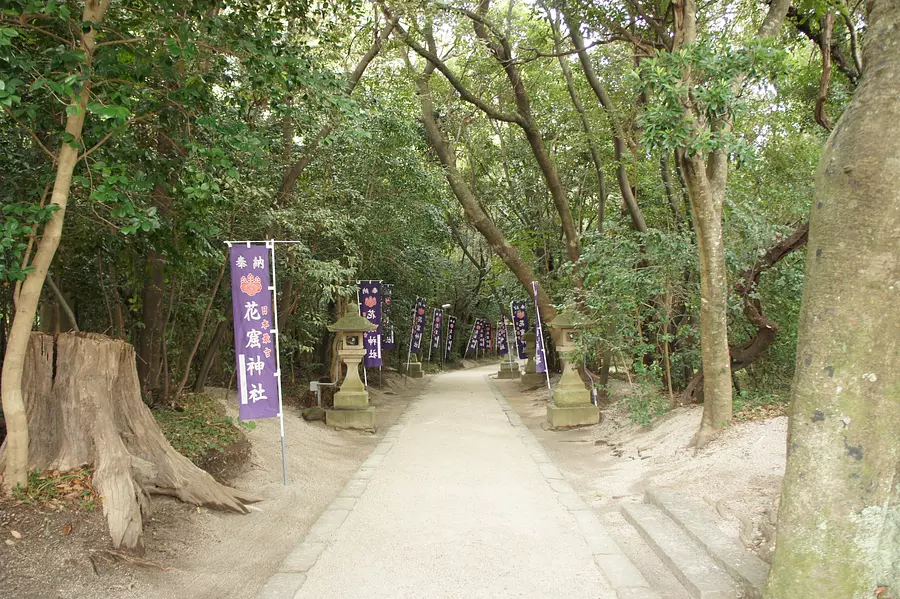
This is what the approach to the shrine looks like.
It has a solemn atmosphere, which is the complete opposite of the bright atmosphere of Otsuna Chaya, which is located before passing through the torii gate. It's only a short distance from the shrine, but as you walk through the trees, the air seems to become clearer.
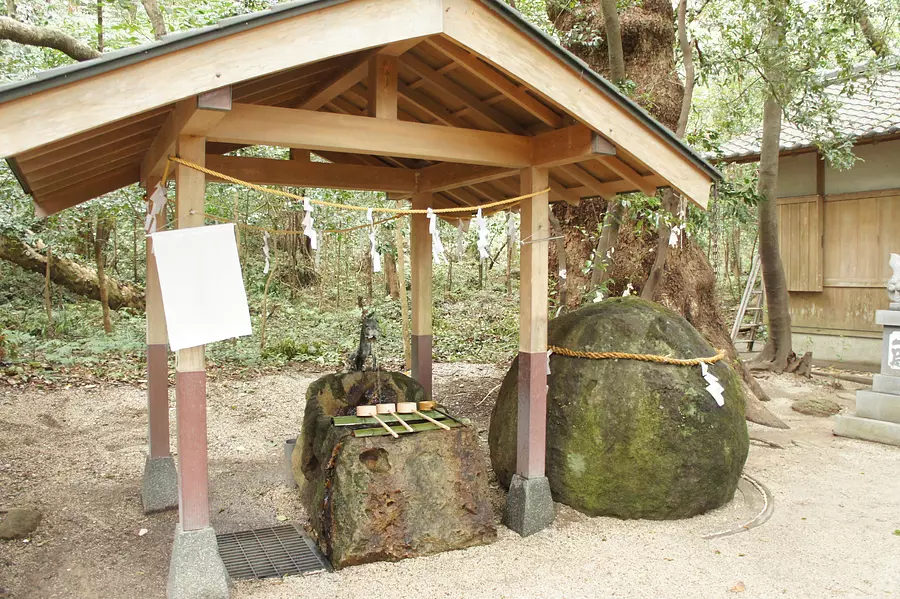
As you walk a little further along the approach, you will soon see Sanro-den, where the shrine office is located, and just before that is the Chozu-ya.
Chozuya is a place where people wash their hands and mouth to purify themselves before visiting the shrine. Generally, every shrine has a ``chozuya'', but what really catches the eye here is the large round stone right next to the chozuya.
It is about 1 meter in diameter and is covered with a shimenawa rope.
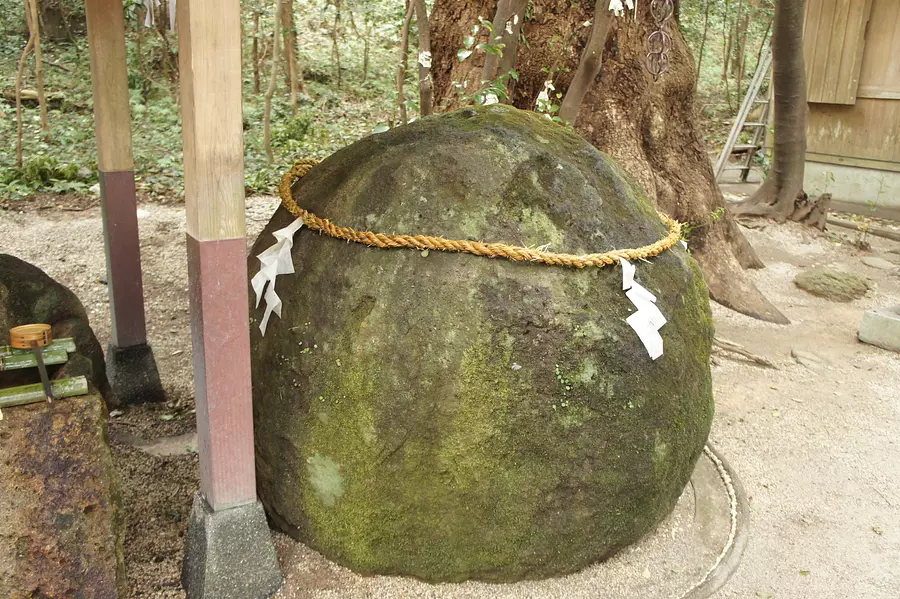
In fact, this cobblestone is a sacred object that is said to have fallen from Iwakura, which is a sacred object.
According to the chief priest, it is said that ``If you rub a sore spot and then touch this stone, the bad thing will be healed,'' and the locals also enthusiastically touch the stone.
In addition, KumanoCity has recently been actively inviting softball games and team training camps. This stone is said to be round like a ball, so softball players who come to KumanoCity for games or training camps sometimes come to pray for divine blessings.
This summer (2018), the inter-high school tournament was held in Mie Prefecture, and the softball tournament was held in KumanoCity. People from the Inter-High School softball team may have also visited.
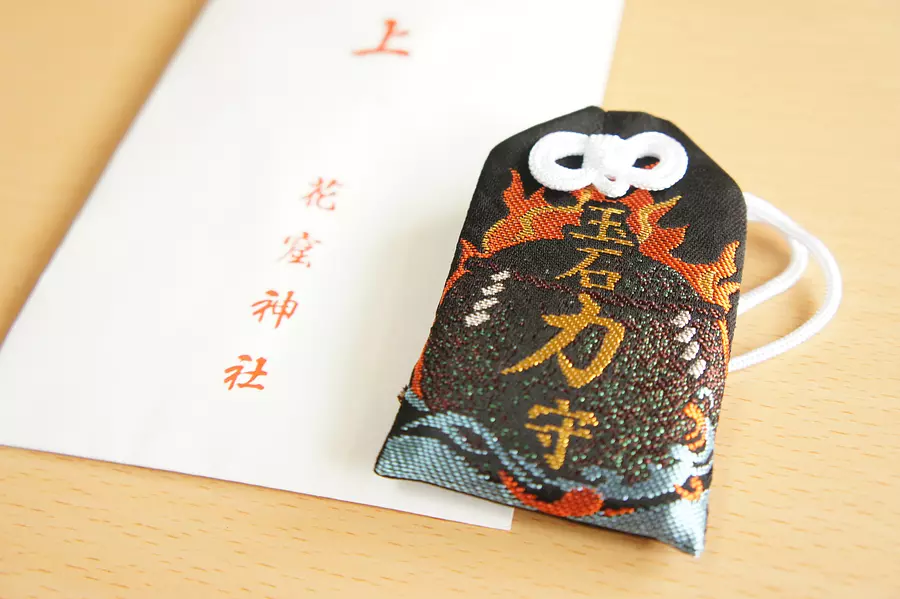
At Hananoiwaya-jinjaShrine, you can also receive a talisman named ``Tamaishi Rikimori'', which is named after this cobblestone (500 yen).
It has a reliable design that seems to give you strength. It would also be a great souvenir for someone who is working hard on their ball game.
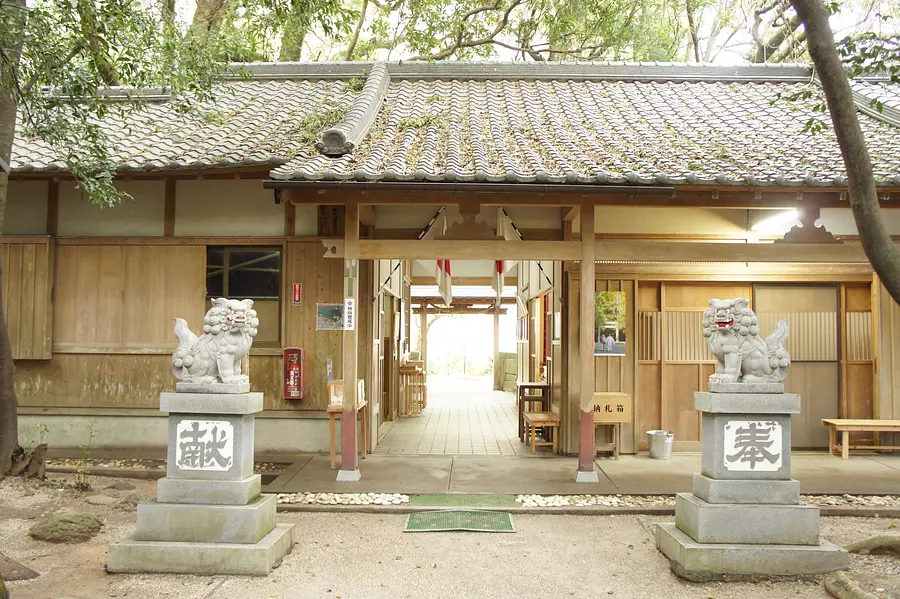
After cleansing your hands and mouth at the chozubya near the cobblestone, you will pass through this Sankoden to worship at the shrine.
In the foreground is a guardian dog with strong eyesight. The shrine office is on the right side of the passageway, and you can receive amulets and stamps here.
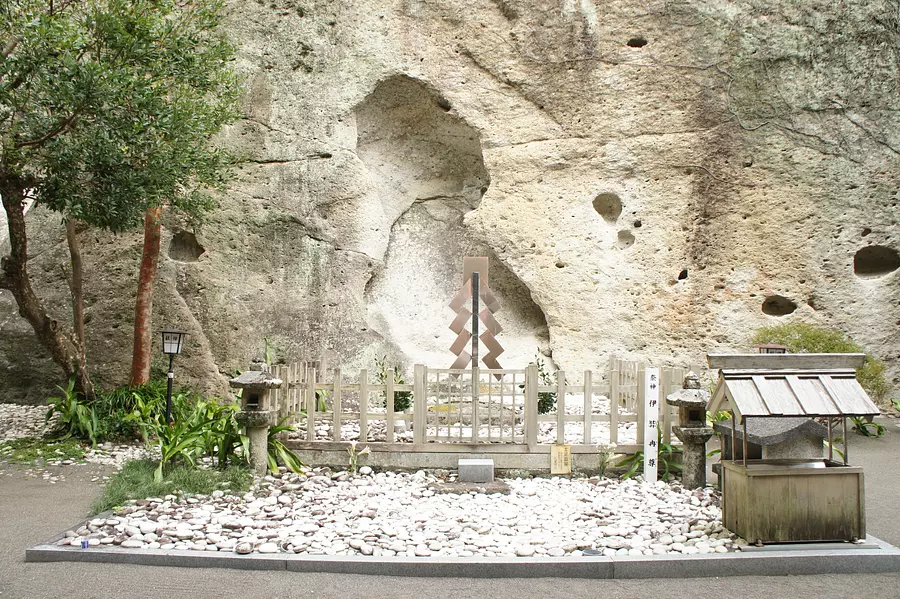
As you pass Sanko-den, you will notice that the large rock (Iwaza) where Izanami is enshrined towers in front of you, so large that it cannot be seen.
Hananoiwaya-jinjaShrine does not have a shrine building, but instead this large rock is considered the object of worship. A place of worship is set up in front of the gourd-shaped hole at the bottom of the Iwaza, and worship is done there.
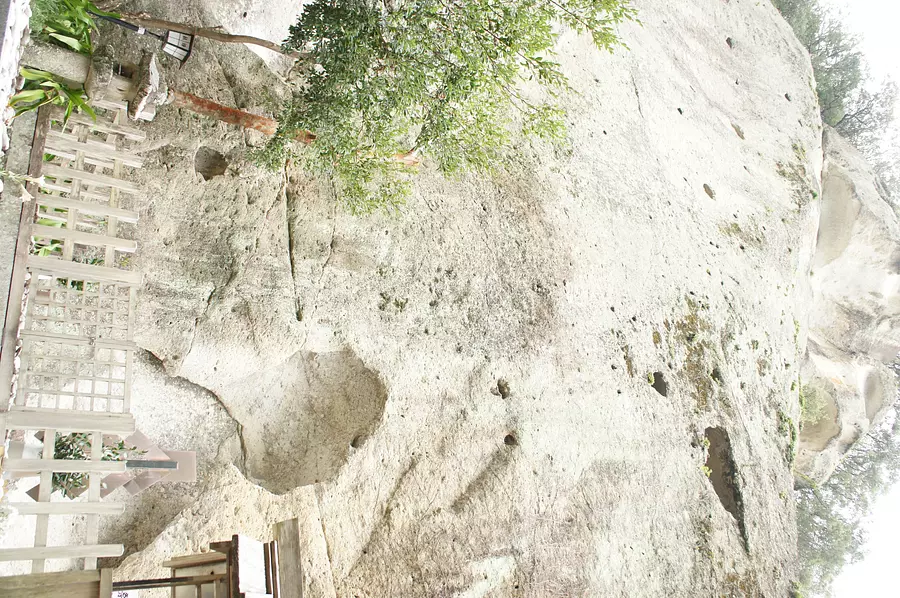
This is the view seen from the place of worship.
It is a very large rock and is nothing short of spectacular. When you stand in front of it, you can feel the significance of the development of ``nature worship'' not only in Japan but all over the world since ancient times.
I would like you to experience this spiritual atmosphere on-site.
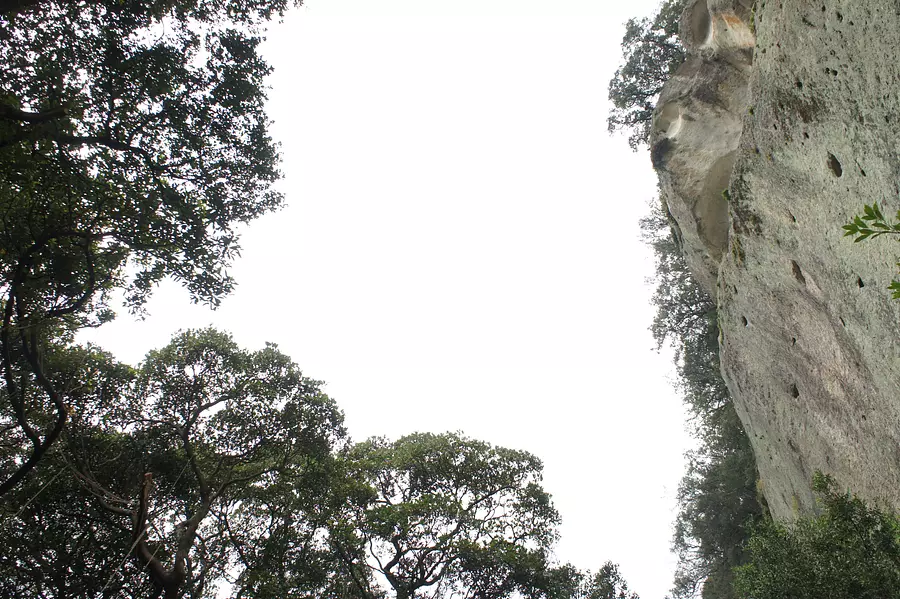
At Hananoiwaya-jinjaShrine, the annual "Otsunakake Shinto Ritual" is held on February 2nd and October 2nd every year. This involves pulling a rope about 170 meters from the top of Iwaza to Shichirimihama Beach in front of you, and then tying it to a sacred kounogi on the south side of the precincts. It is a big event where traffic is restricted in the surrounding area. It is a Shinto ritual that worshipers can also participate in, so if the timing is right, please come and join us.
Apparently, the rope that was attached to it in February of this year broke in June, and the rope was not attached at the time of our interview. After the ritual, a long rope is hung from the right hand side (above the Iwaza) to the left hand side (south side of the precincts) in the photo, and you can see a beautiful scenery with a rope called ``hatatsuna'' hanging from the rope. .
By the way, when they hang a new rope, they don't remove the old rope even if it's still there. Depending on the timing, you may be able to see two ropes attached.
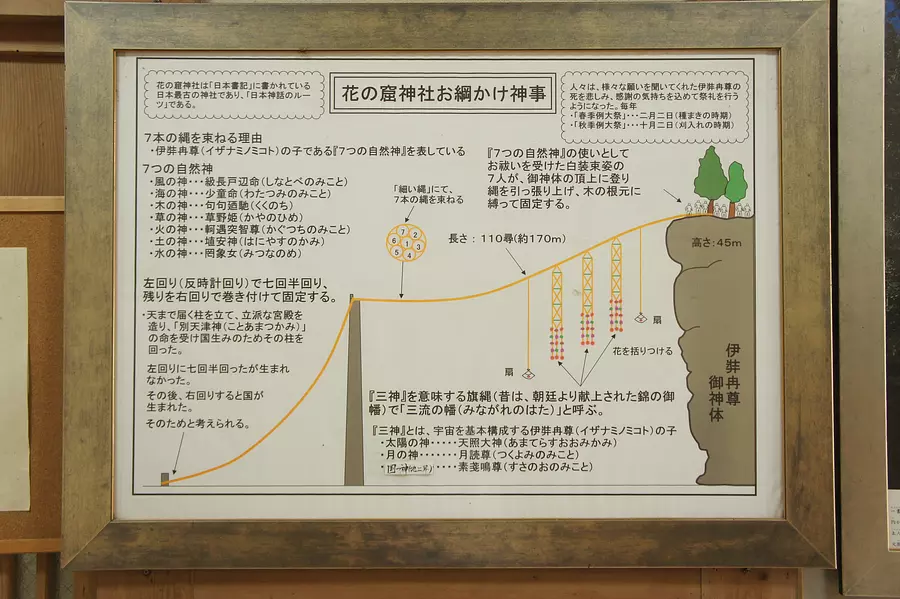
This is an explanatory document for the ``Otsunakake Shinto ritual'' inside Sankaden.
Seven ropes representing the seven nature gods (wind, sea, wood, grass, fire, earth, and water) that Izanami gave birth to are put together to form a single rope that is 170 meters long. The rope is then passed between the rock that is the sacred object of Izanami and kounogi on the south side of the precincts.
Instead of passing just a long rope, three flag ropes and fans are hung in front of the Iwaza. These three flag ropes represent the three gods that Izanami gave birth to (the sun god: Amaterasu, the moon field god: Tsukuyomi no Mikoto, and the dark god: Susanoo no Mikoto). .
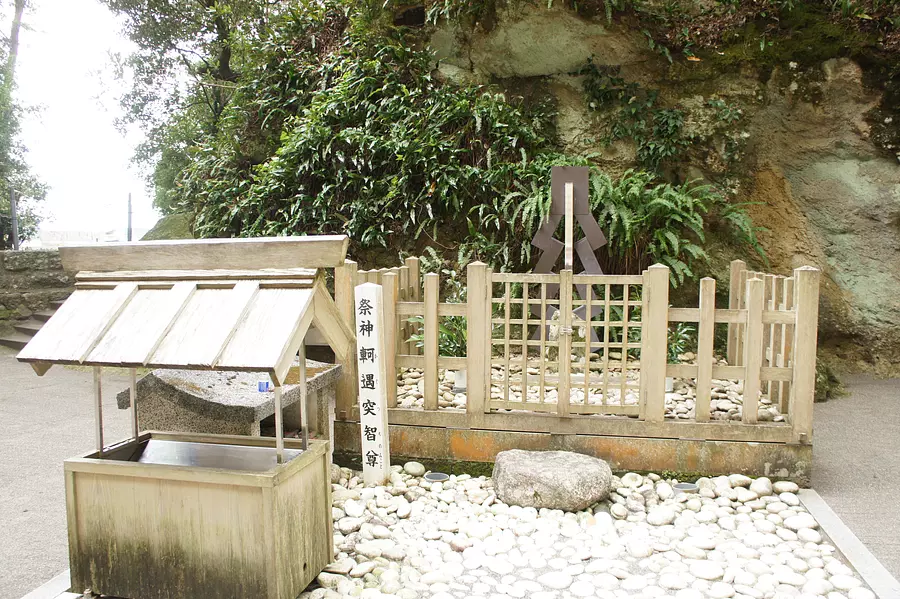
Diagonally in front of Iwaza, the object of worship for Izanami, there is also a place of worship for Kagutsuchi, the god of fire, who is Izanami's son.
After losing his wife, Izanagi is so overcome with grief that he kills his child, Kagutsuchi, who was the cause of his wife's death. Izanami tends to be talked about more in Hana-no-Iwaya, but Kagutsuchi, who was killed by her father soon after she was born, is also enshrined here.
In addition to Iwaza, the sacred object of Izanami, this place of worship of Kagutsuchi is also a must-see when talking about ``resurrection.''
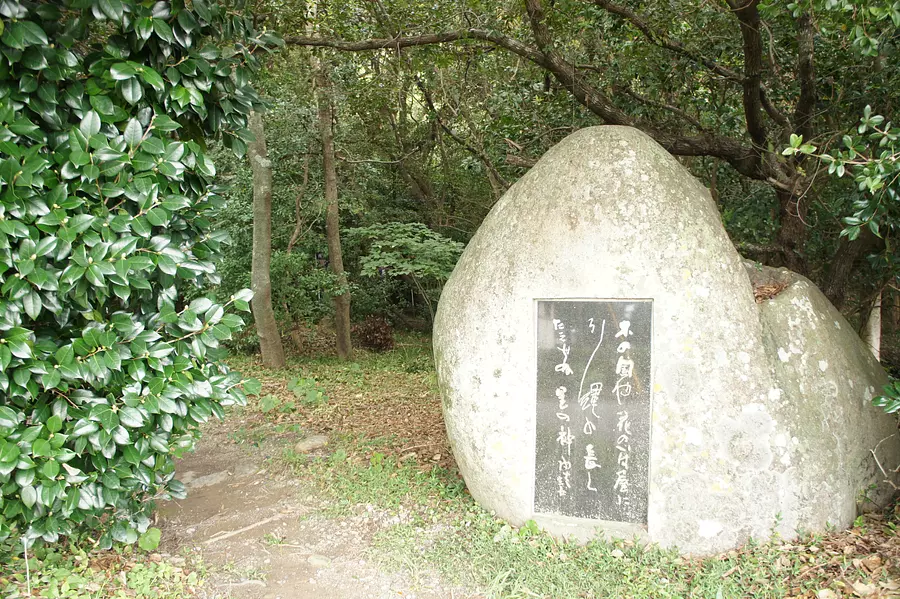
Hananoiwaya-jinjaShrine is said to be the oldest shrine in Japan. And the ``Otsuwakake Shinto ritual'' has been held there for a long time. Many people have written about this shrine and its rituals in songs since ancient times.
In the precincts of the shrine (immediately on the right after entering the torii gate) is a poem written by MotooriNorinaga.
``In the land of trees and flower gardens, the long-lasting tricks of the village gods of dragging ropes.''
There is a monument with the song engraved on it.
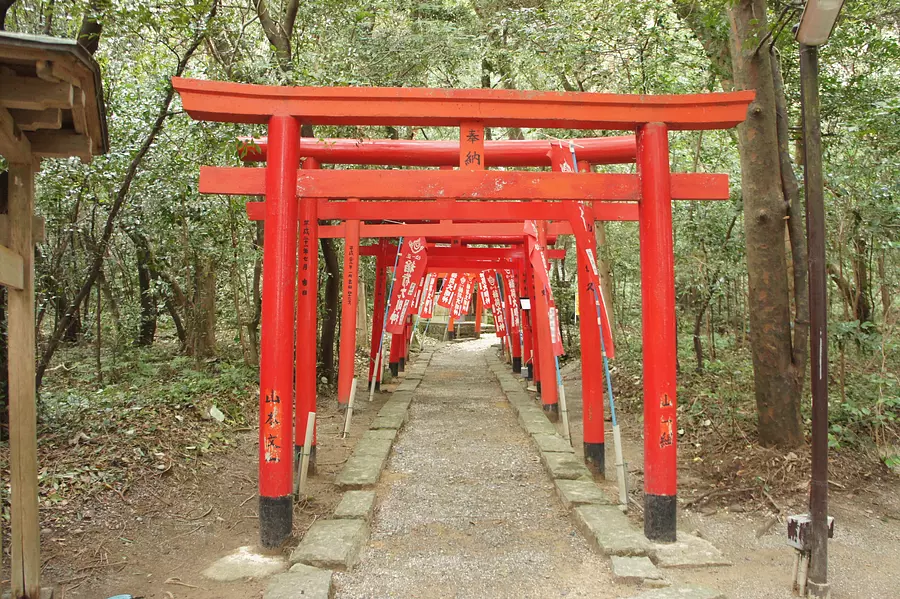
As you pass through the torii gate and walk along the approach, you will see a side street with a red torii gate on your left, and beyond that you will also find Inari Shrine and Ryujin Shrine.
There are also water stations for Inari Shrine and Ryujin Shrine in the foreground.
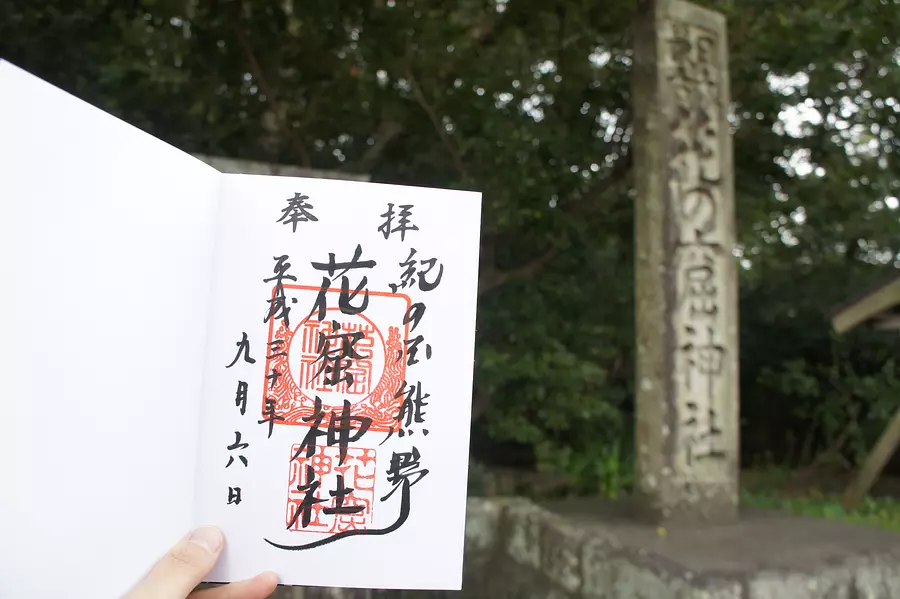
And, I received the stamp of Hananoiwaya-jinjaShrine that I was looking for! (300 yen)
At Hananoiwaya-jinjaShrine you can also get a stamp from Ubuta Shrine, which is about 2 kilometers away.
Hana-no-Iwaya is the tomb where Izanami and Kagutsuchi were buried, and Uta Shrine is said to be the place where Izanami gave birth to Kagutsuchi (=the place where she was burned to death).
If you have time, you should visit both Hananoiwaya-jinjaShrine and Uta Shrine. Furthermore, you will be able to immerse yourself in the world of ancient Japanese mythology.
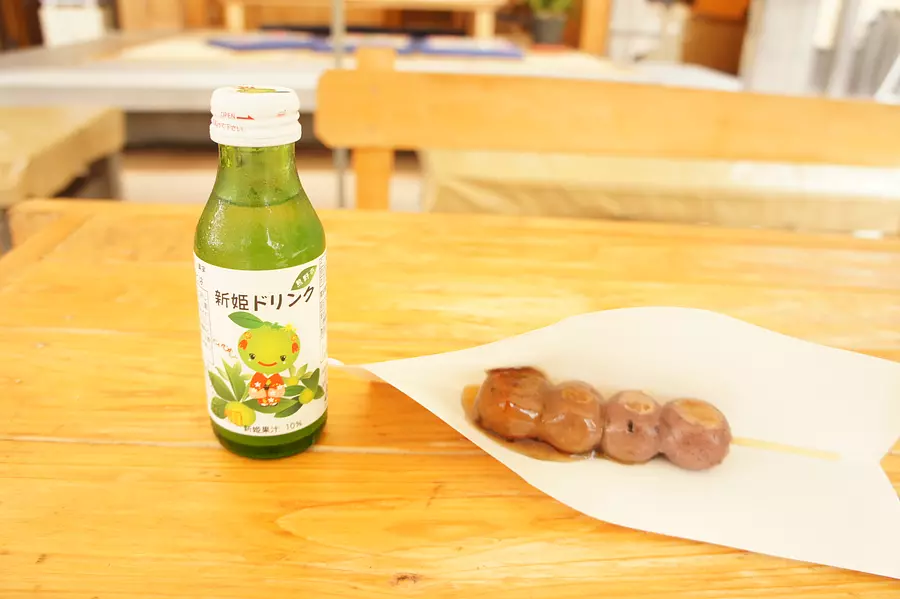
After you finish praying, take a break at Otsuna Chaya next door.
In addition to souvenirs, you can also enjoy snacks and drinks, as well as several tourist information pamphlets.
The photo shows a drink made from KumanoCity 's specialty citrus ``Nihime,'' and mitarashi dango made from ``Izanami Rice,'' another local specialty.
The dango has the aromatic flavor of ancient rice, and they are baked to order, so you can eat them freshly baked.
Niihime drink has a refreshing citrus scent and a unique bitterness, and it's a delicious drink that permeates your tired body after a long walk.
〇For more information about Otsuna Chaya, click here → I went to Michi-no-eki "Kumano Hana-no-Iwaya: Otsuna Chaya"! Detailed information on popular souvenirs, gourmet food, and surrounding information!
I received a lot of power from Hananoiwaya-jinjaShrine and relaxing at Otsuna Chaya was very soothing.
It is highly recommended for those who like shrines, so please give it a visit.
[Hananoiwaya-jinjaShrine: Basic information]
・Address: 130 Arimacho, KumanoCity 519-4325
・Telephone number: 0597-89-2881
·parking
30 regular cars/3 buses, EV charging facility available
*Use the parking lot of “Michi-no-eki Kumano Hana-no-Iwaya”
·access
Public transportation: Approximately 20 minutes walk from JR Kisei Line "KumanoCity shi Station"
Car: Approximately 5 minutes from Kisei Expressway “Odomari Interchange”
・Official URL http://hananoiwaya.com/
*The content of the article is as of September 2018.
| Category | |
|---|---|
| season | |
| area |

